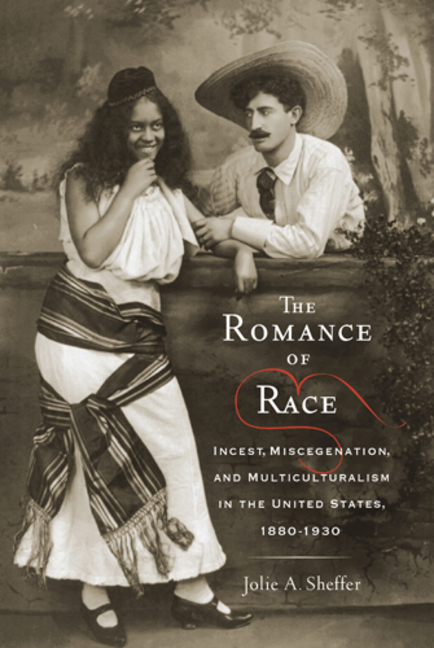The Romance of Race: Incest, Miscegenation, and Multiculturalism in the United States, 1880-1930Posted in Books, Literary/Artistic Criticism, Media Archive, Monographs, United States, Women on 2012-09-23 02:44Z by Steven |
The Romance of Race: Incest, Miscegenation, and Multiculturalism in the United States, 1880-1930
Rutgers University Press
January 2013
240 pages
Paper ISBN: 978-0-8135-5462-4
Cloth ISBN: 978-0-8135-5463-1
eBook ISBN: 978-0-8135-5464-8
Jolie A. Sheffer, Associate Professor, English and American Culture Studies
Bowling Green State University, Bowling Green, Ohio
In the United States miscegenation is not merely a subject of literature and popular culture. It is in many ways the foundation of contemporary imaginary community. The Romance of Race examines the role of minority women writers and reformers in the creation of our modern American multiculturalism.
The national identity of the United States was transformed between 1880 and 1930 due to mass immigration, imperial expansion, the rise of Jim Crow, and the beginning of the suffrage movement. A generation of women writers and reformers—particularly women of color—contributed to these debates by imagining new national narratives that put minorities at the center of American identity. Jane Addams, Pauline Hopkins, Onoto Watanna (Winnifred Eaton), María Cristina Mena, and Mourning Dove (Christine Quintasket) embraced the images of the United States—and increasingly the world—as an interracial nuclear family. They also reframed public debates through narratives depicting interracial encounters as longstanding, unacknowledged liaisons between white men and racialized women that produced an incestuous, mixed-race nation.
By mobilizing the sexual taboos of incest and miscegenation, these women writers created political allegories of kinship and community. Through their criticisms of the nation’s history of exploitation and colonization, they also imagined a more inclusive future. As Jolie A. Sheffer identifies the contemporary template for American multiculturalism in the works of turn-of-the century minority writers, she uncovers a much more radical history than has previously been considered.
